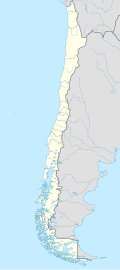| Casa Colorada | |
|---|---|
 Casa Colorada | |
| General information | |
| Status | Completed |
| Coordinates | 33°26′19″S70°38′57″W / 33.43861°S 70.64917°W |
| Completed | 1769 |
Casa Colorada (English: Red House) is a colonial house located in Santiago, Chile. It was built in 1769, [1] by Joseph de la Vega for Mateo de Toro Zambrano, then transferred to the Irarrazaval Family and currently houses the Museo de Santiago (English: Museum of Santiago). The house has a clay-tiled roof, balconied windows, and deep-red walls, and consists of two storeys. [1]
Visitors walk through the homes two large patios to get the Museo de Santiago, which occupies five of Casa Colorada's rooms. The museum explores Santiago's history from the Pre-Columbian era to contemporary times. [1]
